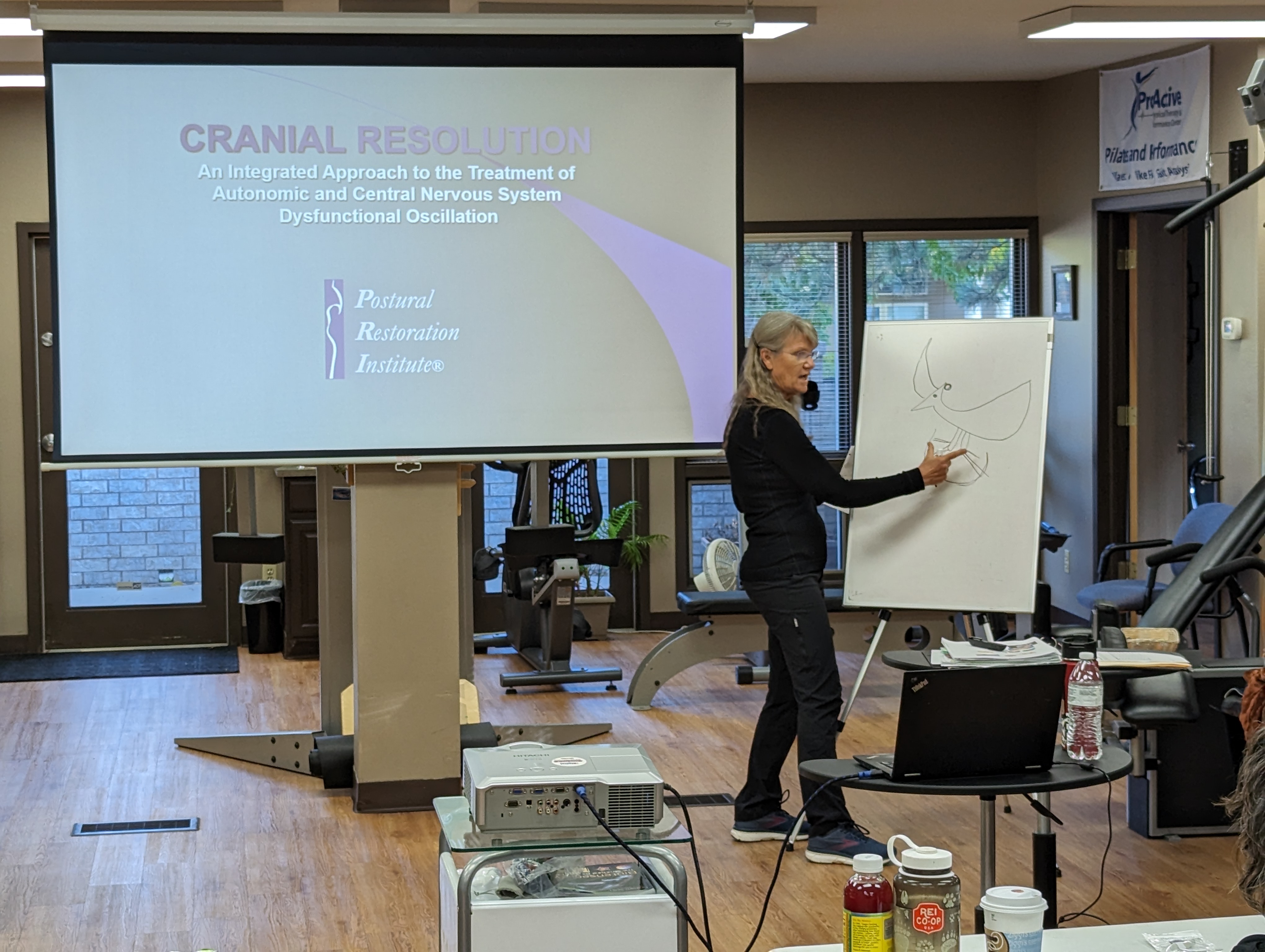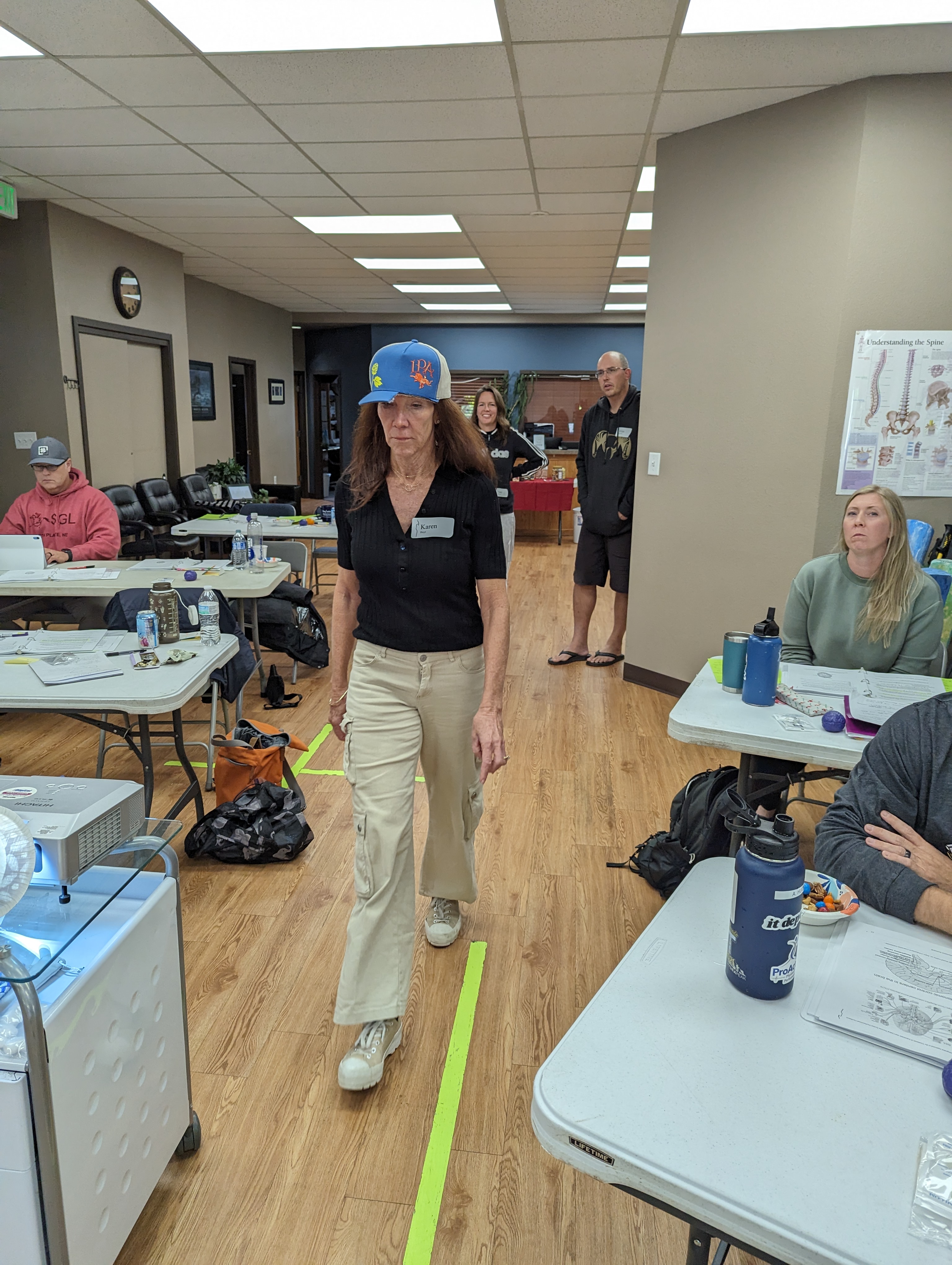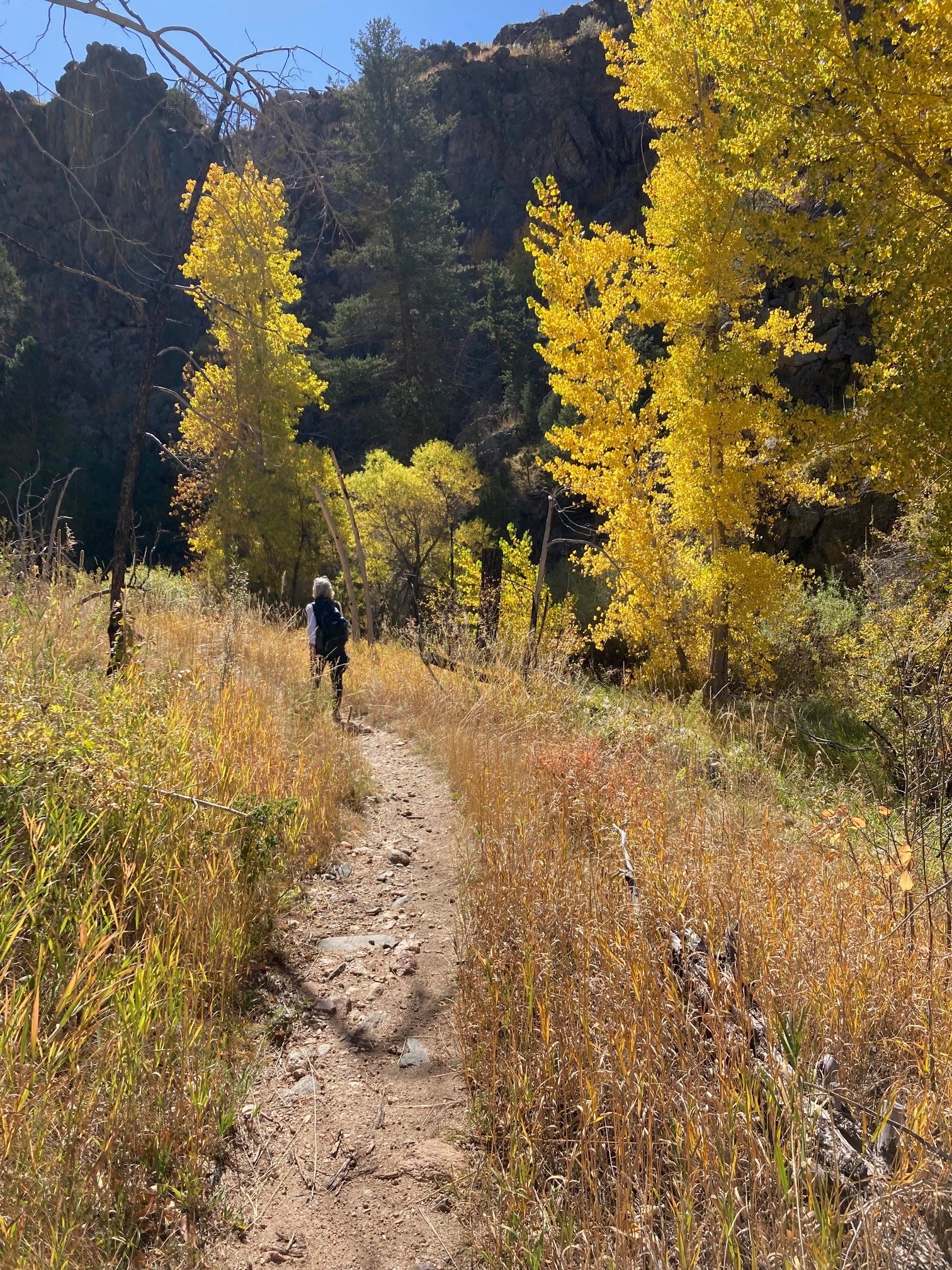Flying from sea level North Carolina to mile high Colorado was indeed a great way to experience pressure changes. It gave me an opportunity to discuss, firsthand, what our craniums should constantly be doing to resolve these changes, which are cyclically occurring (perhaps to a smaller extent) inside of our heads (and bodies) every moment of every day. And I could not have had a better group of people to discuss this with than those that attended last weekend’s “Cranial Resolution” course held at ProActive PT in Fort Collins, Colorado.

The Cranial course indeed has a lot of didactic material, but right from the start clinical application of this material was being discussed. And I can’t tell you how thrilled I was to get, early on on day one, questions that reflected how people who had never previously taken this course (which was the majority of people that were in attendance) were clearly conceptualizing this complex information in a clinical manner. Like when Tracy asked, “Well then wouldn’t it be helpful to block the right nostril when doing some of the PRI techniques?” What was so cool about these sorts of questions is that they showed people were starting to understand WHY we might want to do things . . . before ever being algorithmically introduced to a ball of cotton or a funny hat.

To me, understanding why PRI works is at the root of the Cranial Course. It brings concepts and people back down to basics, literally down . . . as in sitting on the floor down, to take their either “too loose” (disassociated) or “too tight” (overly regulated) legs out of the equation so they can feel how their cranium and thorax SHOULD integrate (alternate and diverge). The two avatars that volunteered to illustrate these two different ANS integration responses could not have been more perfect, or more appreciated. Addison not only visibly gained nearly 40 deg of SLR, but also admitted that at the end of his demonstration he was, “for the first time,” able to comfortably tolerate long sitting. And Karen was finally able to find and feel her hamstrings (even if it was “only a 25% sense,” she now at least had something to start ergotropically PUSHING the floor with). And we were able to get Craig, our well balanced, “neutral” model, to quickly illustrate the role that lateralized multisensory input plays in influencing our ANS responses. Sorry Craig.
This trip to Fort Collins was my first venture into Colorado, so of course I had to make the most of it. Jennifer, a wellness coach who has become a staunch PRI ambassador, was going to be attending so the two of us arranged to fly out several days early to be able to do some hiking. We loved the trails along the Poudre Valley (Hewlett Gulch and Grey Rock) and went up the well-traveled Horsetooth trail to the falls just outside of town. All spectacular, especially since the sun was out, the temps were perfect, and the Aspen’s were at their peak yellow. I’m starting to like this traveling to teach gig!

Most importantly though, I want to extend a deep, heartfelt thanks to both the institute and the incredible hosts at ProActive (Brian, Tracy, Craig, and Addison), along with all of those that traveled (Jennifer, Chris, Karen, Lisa, Derya, Rachel and David) to be a part of this weekend of learning. Absolutely everyone brought something to the mix (even quiet Chris, learning about how you have worked with an ENT and Nutritional Flow was thought provoking). It was all such a great experience. I can’t wait until the next time I get to teach this material, which will be on a live stream from Nebraska.


